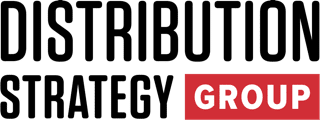In 1961, M.I.T. mathematician and meteorologist Edward Lorenz was studying weather prediction models when he found that minute differences in initial data resulted in dramatically different outcomes. This discovery became the foundation of modern chaos theory and its most widely-known principle: the butterfly effect.
Just as a single flap of a butterfly’s wings could theoretically set off a chain of events that leads to a tornado, so too can a seemingly minor supply chain disruption have major consequences.
A Chicken Restaurant with No Chicken
Early on a cold February morning, a seven-vehicle traffic collision involving two junctions on the M6 motorway, the longest in the UK and an artery of British transportation, prompted police to swiftly seal off a critical stretch of road for investigation. Shortly after, two trucks collided near another junction, compounding the disruption.
Over the next few days, what seemed like a couple of isolated incidents snowballed into the infamous KFC chicken shortage of 2018. KFC locations across the U.K. had to close temporarily because they didn’t have the main thing on the menu: chicken. One seemingly insignificant event – the sort of highway pileup that happens all the time – had cascaded into a business catastrophe. For distributors, this highlighted the fragility of interconnected systems and showed that it doesn’t take much for a supply chain disruption to spiral out of control.
Small Causes, Big Effects
Consider how the following scenarios illustrate the butterfly effect and its impact on supply chains. The initial causes may seem insignificant compared to pandemics and geo-political conflicts, but the repercussions could be very significant indeed if your supply network isn’t agile enough to cope.
- A Factory Shutdown in Asia: A single factory in a key production hub experiences a temporary shutdown due to a power outage. Downstream, manufacturers waiting for components must halt production, distributors face delays in stock replenishment and retailers lose sales due to empty shelves.
- Weather Delays in Transit: A snowstorm grounds flights in a major shipping hub, delaying raw material shipments to multiple locations. This triggers bottlenecks in production schedules, backorders in customer-facing channels and unanticipated costs for alternative transportation.
- Sudden Shifts in Consumer Preference: A social media trend causes a particular product to experience a spike in demand that outpaces the company’s production capacity. What starts as a small, localized phenomenon, such as a viral TikTok, can trigger widespread inventory shortages, logistical bottlenecks and brand reputation challenges.
The Shortcomings of Traditional Models
Conceived in more ideal environments for more predictable times, traditional supply chain models quickly crumble under the compounding pressures of modern disruptions. In traditional supply chain management, processes tend to be reactive and siloed. Inventory is managed in isolation, replenishment schedules are rigid, and communication between departments and stakeholders is minimal. Today’s global supply chains are so thoroughly intertwined that even small, localized disruptions such as a factory delay, a missed shipment or a sudden demand spike can create outsized impacts across the entire network.
These occurrences leave organizations exposed to:
- Inventory imbalances. A delay in a single component shipment can leave assembly lines idle, creating shortages in finished goods while warehouses elsewhere remain overstocked with unsellable inventory.
- Missed opportunities. Static demand planning based on historical data fails to account for real-time shifts, leading to overstock of declining products and stockouts of trending items.
- Increased cost. Linear supply chains often fail to optimize logistics, resulting in higher costs from expedited shipping, overtime labor or penalties for late deliveries.
- Wasted working capital and an idle workforce. When a work stoppage occurs, employees throughout the supply chain — from production to logistics — are left unproductive, leading to unnecessary payroll expenses and decreased efficiency.
- Customer dissatisfaction. Disruptions left unchecked ripple down to the end customer, leading to delayed orders, unmet expectations and potential loss of brand loyalty.
Why Agility and Integration Are Key
Agility and integration aren’t just supply chain buzzwords; they’re essential capabilities for identifying and mitigating disruptions before they spiral into larger problems. To respond effectively to the uncertainty and volatility present in modern supply chain networks, organizations must adopt new ways of thinking. It’s also critical to use advanced analytics to model possible scenarios and their effects to prepare actionable “playbook” strategies.
Use real-time data to adapt dynamically to changing conditions and leverage integration to ensure decisions are aligned across your organization. A holistic approach optimizes resource allocation, which helps secure the right supplier or solution at the right price. It enhances service reliability, positioning your brand as one your customers trust to deliver. In today’s competitive environment, consistently exceeding customer expectations, especially during disruptions, transforms your supply chain into a strategic advantage.
The benefits of a holistic supply chain approach include:
- Advanced detection. Real-time data and advanced analytics can pinpoint potential issues before they snowball.
- Dynamic adaptation. Flexible processes allow for immediate adjustments in production schedules, sourcing strategies or transportation routing.
- Seamless communication. All stakeholders, from suppliers to end customers, are aligned and informed when using integrated systems.
- Consistency in customer experience. An agile supply chain ensures customers receive their products on time, even amid disruptions, safeguarding the brand’s reputation.
- Optimum resource allocation. Agile systems identify the most efficient use of resources, reducing operational costs.
- Resilience as a differentiator. Companies that successfully navigate disruptions build trust with customers and stakeholders.
Turning Chaos into Your Competitive Advantage
In supply chain, it’s not just about reacting to the flutter of wings — it’s about readiness to harness the winds they create. Supply chain success hinges on more than just responding to disruptions; you also need to anticipate, adapt and prepare to channel the forces of change.
When crises hit, companies that consistently deliver on their promises to their customers stand out as trusted and reliable partners when it matters most. Anticipating and preparing for the implications of the butterfly effect on your supply chain is now a business imperative.
Leveraging AI, machine learning, and real-time analytics enables businesses to:
- Identify and address risks early. Leverage predictive tools to uncover potential disruptions and evaluate best response strategies.
- Optimize supply across channels. Ensure inventory aligns with dynamic demand trends, reducing excess and shortages.
- Unify teams and systems. Integrate operations to enhance communication and collaboration across the supply chain ecosystem.
Thriving Amid the Chaos
The supply chain landscape is a complex, interconnected ecosystem where even the smallest “flutter” can trigger a cascade of consequences. From traffic collisions leading to restaurant shortages to viral TikTok trends creating inventory chaos, the butterfly effect exemplifies how fragile traditional supply chain models can be. With agility, integration and advanced technologies, businesses can turn chaos into opportunity the next time the proverbial butterfly flaps its wings. Organizations can also transform potential vulnerabilities into strategic advantages by proactively anticipating disruptions, dynamically adjusting strategies and fostering seamless communication.
In a volatile, uncertain era, embracing solutions that enable resilience is not just a strategy — it’s a necessity.
Jeff Metersky is VP of Solutions Strategy for GAINSystems. With more than 39 years of experience in applying advanced analytics to improve supply chain performance, Jeff is a seasoned leader in the field of supply chain design and optimization. As the VP of Solution Strategy at GAINS, he leverages his industry, software and consulting background to enhance the strategy, positioning and vision of GAINS' solutions.

